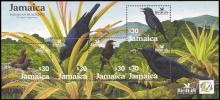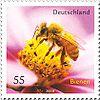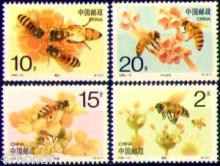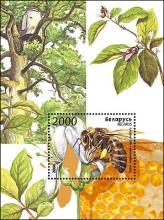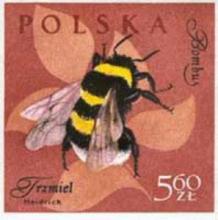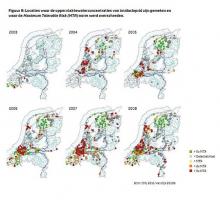
Minister Schippers van Volksgezondheid, Welzijn en Sport heeft mede namens staatssecretaris Dijksma van Economische Zaken een risicobeoordeling van het Rijksinstituut voor Volksgezondheid en Milieu (RIVM) over de gevaren voor de mens van het gebruik van neonicotinoïden naar de Tweede Kamer gestuurd. Het betreft een aanvulling op de risicobeoordeling van 26 maart 2013 van het RIVM en het College voor de toelating van gewasbeschermingsmiddelen en biociden (Ctgb). Aanleiding vormde vormde een open brief van de organisatie PAN Europe aan de Tweede Kamer. Het RIVM stelt dat nooit sprake is geweest van enig risico voor de gezondheid van de consument door residuen van neonicotinoïden. in een reactie schrijft de toxicoloog Henk Tennekes dat het RIVM blind is voor een paradigma verschuiving in de risico analyse. De RIVM analyse houdt geen enkele rekening met nieuwe inzichten over het werkingsmechanisme en het daaruit resulterende dosis-werkingsprofiel. Wanneer neonicotinoïde insecticiden een binding aangaan met nicotinerge acetylcholine receptoren (nAChRs) is deze slechts zeer langzaam omkeerbaar, misschien zelfs wel onomkeerbaar, omdat neonicotinoiden - in tegenstelling tot de natuurlijke neurotransmitter acetylcholine - door acetylcholinesterases niet kunnen worden afgebroken . Met de praktische onomkeerbaarheid van de receptor binding (en de daaruit volgende werking op cognitieve functies) ontstaat een cumulatieve en tijdsafhankelijke toxiciteit. Voor imidacloprid is de met de conventionele risico analyse vastgestelde ADI (acceptable daily intake), d.w.z. de toelaatbare hoeveelheid die iedere dag door mensen mag worden opgenomen, opvallend hoog: 0,06 mg/kg lichaamsgewicht. Deze norm is gebaseerd op een chronische (langdurige) studie in ratten, waarbij de dosering die bij ratten geen waarneembare nadelige effecten veroorzaakte, het zogenaamde ‘no observable adverse effect level’, afgekort NOAEL, van 6 mg/kg lichaamsgewicht per dag door een veiligheidsfactor 100 werd gedeeld. Daarmee denkt men een voldoende grote veiligheidsmarge te hebben bereikt. De vraag is echter of het gebruikte testmodel subtiele ontwikkelingsstoornissen, zoals dit bij ADHD het geval is, aan het daglicht kan brengen. Naar mijn oordeel kun je daar grote vraagtekens bij zetten, en zeker bij stoffen waarbij de werking door de blootstellingsduur enorm kan worden versterkt, aldus Tennekes.
De organisatie PAN Europe stelde in de open brief dat er een gevaar bestaat voor de volksgezondheid bij het gebruik van neonicotionoïden. Schippers heeft het RIVM gevraagd om nog eens een aanvullende risicobeoordeling uit te voeren voor alle mogelijke toepassingen van alle neonicotinoïden om een compleet beeld te vormen van de potentiële risico’s voor de mens van het gebruik van deze middelen.

